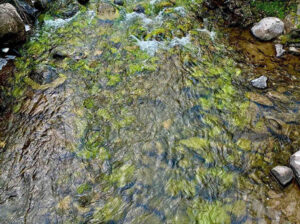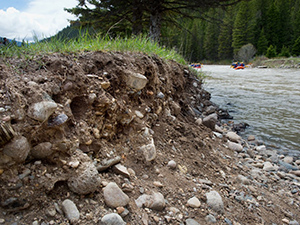State of the Gallatin
To the uninformed angler, leisurely casting dry flies to eagerly awaiting cutthroat, the Gallatin may seem like a healthy waterway.
Its blue-ribbon designation and nearly 3,000 trout per river mile suggest the Gallatin enjoys a high level of ecological integrity, and in some ways it does–but it is also under threat from many angles.


To the uninformed angler, leisurely casting dry flies to eagerly awaiting trout, the Gallatin may seem like a healthy waterway.
Its blue-ribbon designation and nearly 3,000 trout per river mile suggest the Gallatin enjoys a high level of ecological integrity, and in some ways it does
– but it is also under threat from many angles.
Pressure Points
While the Gallatin is under pressure from a variety of sources, we prioritize our work based on what is having the most damaging impact, and what projects can generate the most positive outcome.

Excess Nutrients
In the Big Sky area, three Gallatin tributaries are impaired for nutrients, meaning they exceed state standards.
To combat this issue, we launched our Nutrient Reduction Plan, a multi-phase strategy focused on targeted water-conservation and habitat-restoration projects. These projects will increase surface water flows, reduce nutrient concentrations, and restore native vegetation, natural filters that absorb nutrients to keep them from entering ground and surface water resources.

Easy Access
Visitors have created miles of trails and roads along the river’s edge, trampling important streamside vegetation and eroding fragile riverbanks. This leads to increased sediment loads and degraded wildlife habitat.
To address the problem, the Task Force has partnered with Trout Unlimited and the Custer Gallatin National Forest to create a comprehensive River Access Restoration Strategy.

Climate Change
Perhaps the biggest threat to the Gallatin—and the hardest to manage—is climate change. This global phenomenon will leave no region unaffected, the upper Gallatin included.
As the problem persists, how can we build resiliency into our headwaters region? The solution starts with water conservation, but long-term planning for a future with more drought and less water is also critical.
